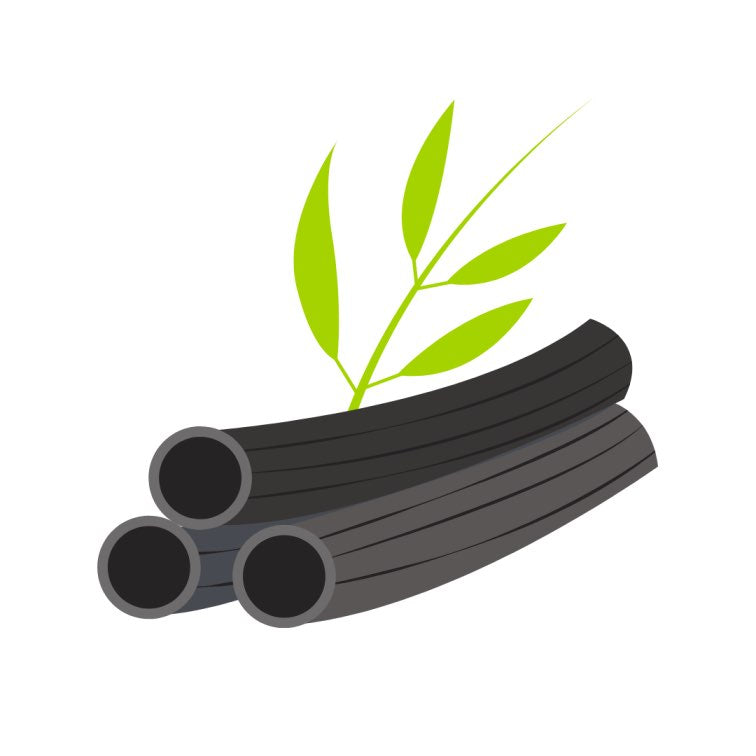Palm oil—you’ve probably heard of it, but do you know why palm oil is so controversial? Palm oil is used everywhere. Found in about 50% of products that line supermarket shelves, palm oil is found in everything from soap and lipstick to food and even newspaper ink. We know it’s useful, so let’s take a look at what makes it so bad.
What Exactly is Palm Oil?
Palm oil is made from the gorgeous red-orange fruits from the oil palm tree (Elaeis guineensis). The kernels can be crushed to make palm kernel oil, or the palm oil can come from squeezing the fruit.

Providing one of the most widely-consumed edible fats, the oil can be used like vegetable oil, or to make shortening and margarine. It’s also resistant to oxidation, so you’ll often see it in processed food because it helps make products last longer.
While palm oil is rich in antioxidants, it’s also high in saturated fats and may cause a rise in bad cholesterol or present a risk of atherosclerosis.
So then why do we use palm oil so much? Well, for starters it’s an extremely efficient crop—producing up to 10 times more oil than crops like coconut palms or soybeans! It’s also versatile, odorless, and colorless, so it can be used in a variety of products. Perhaps most importantly, it’s much cheaper than other oils.
What are some other names for palm oil?
It’s not only hard to avoid palm oil, but it’s also hard to know if it’s in a product in the first place!
Here are some ingredients that often contain palm oil (to name just a few):
- Palm kernel, palm kernel oil, palm fruit oil
- Vegetable oil, vegetable fat
- Glyceryl, hydrogenated palm glycerides
- Palmate, palmolein, palmitate, palmitic acid
- Stearate, stearic acid, palm stearin
- Sodium laureth sulfate, sodium lauryl sulfate, sodium kernelate, sodium lauroyl lactylate
Environmental & Ethical Issues of Palm Oil
While the oil palm tree is originally from West Africa, most palm oil today comes from Malaysia and Indonesia. In just these two countries alone, cultivated areas are roughly the size of New Zealand! As such, palm oil is a serious driver of deforestation. Worse, this deforestation is taking place in some of Earth’s most biodiverse forests.
Already, this has contributed to habitat destruction for endangered species like the Sumatran rhino, pygmy elephant, and Orangutan. It’s pushed Indigenous communities out of their land, and fostered an exploitative industry that uses child labor and leaves workers without access to electricity, running water, schools, and health care.

Not only does deforestation impact some of our most treasured animal species, but disturbing the carbon-rich soils in these forests releases millions of tons of greenhouse gasses into the atmosphere, which drives climate change.
Is Sustainable Palm Oil Possible?
Because palm oil can efficiently produce high quantities of oil, and do so nearly year round, it’s a popular crop for growers and smallholder (small-scale, family) farmers. In fact, around 60% of the palm oil in Indonesia is produced by smallholders who rely on the crop for their livelihoods.
If we were to stop using palm oil completely, not only would it jeopardize the wellbeing of the millions of people who rely on the industry for their income, but it may even lead to worse problems. Replacing palm with other types of oils—like canola, coconut, or sunflower—could actually lead to worse environmental outcomes. Less efficient than palm oil, these would require more land and water, and take much longer to produce oil.
Because it’s used so ubiquitously in consumer goods, replacing palm oil with another type of oil is likely to be just as—if not more—disastrous.
What about RSPO palm oil?
That’s why, in 2004, the World Wildlife Fund, companies, and governments came together to form the Roundtable on Sustainable Palm Oil (RSPO). Their standards ensure that palm oil is free of exploitation and deforestation, and their logo makes it easy to find RSPO-certified palm oil.

When palm oil comes from RSPO-certified sources, it meets growing demand for the oil while also helping to support poverty reduction, safeguard workers, and protect the environment and wildlife. The RSPO’s environmental and social criteria:
- prohibits new cultivation in areas with significant biodiversity or high cultural value;
- reduces use of pesticides and fires; and
- ensures fair treatment of workers.
So far, nearly 190,000 hectares have been conserved by RSPO certifications, roughly 21% of total production. Many producers have begun to adopt environmentally-friendly practices. With growing demand for sustainable palm oil, even more land and diverse ecosystems can be preserved.
Why Palm Oil is Bad… And How We Can Make it Better
As consumers, we can avoid products that contain palm oil by eating less packaged snacks and cookies, making our own DIY cleaning products, and opting for products like natural toothpaste that are free of palm oil. We can also help to correct some of palm oil’s environmental issues by supporting brands who have made the switch to sustainable palm oil and bear that green RSPO label.
At Green Eco Dream, we’re happy to report that many of the brands we work with either avoid palm oil entirely, or ensure their suppliers source only RSPO-certified palm oil. By continuing to support them, we can continue to drive the momentum of sustainable palm oil.
Check out our collection of palm oil-free skincare products below.
To help you transition to a more sustainable and palm oil-free skincare, use code BLOG10 and save 10% on your first order!
If you enjoyed reading this Blog, please share it, and help us get the word out together. Thank you! 😊













Thank you for sharing! Learning about palm oil’s impact on the environment was eye-opening. Let’s make informed choices to protect our planet and support sustainable alternatives. Great blog!